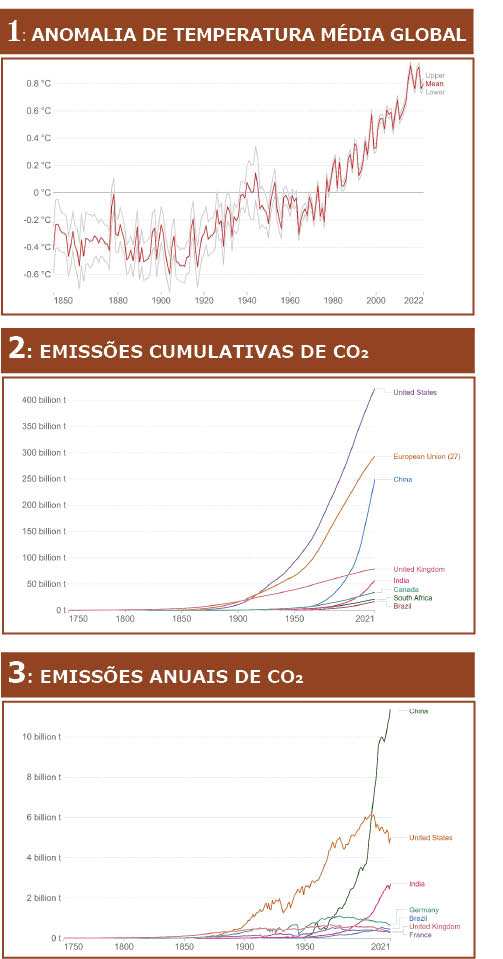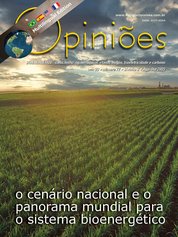Milton Santos Campelo da Silva
Diretor Presidente do Sindicanalcool - MA e PA
OpAA77
O desafio existencial do nosso tempo
A ciência já demonstrou a responsabilidade antropogênica nas emissões de gases do efeito estufa (GEE) e suas consequências: temperaturas extremas, alteração dos regimes de chuvas, derretimento de calotas polares, elevação do nível dos oceanos, prejuízos biológicos, disputas por recursos naturais e ativos biológicos estratégicos, como alimentos, água e territórios, que podem agravar e intensificar grandes movimentações humanas, geradores de conflitos, violência social, resistências a migrantes e competição descontrolada e desproporcional entre as nações.
A análise, “Nova Estratégia de Defesa dos EUA: permanências, inovações e lições para o Brasil”, do INCT, apresenta os efeitos das mudanças climáticas como o “desafio existencial do nosso tempo”. Reconhece que as medidas mitigadoras dos impactos ambientais estão atrasadas em sua implementação e cumprimento dos compromissos assumidos em cúpulas, como a COP 26 ou do Acordo de Paris para emissões liquidas zero até 2050.
O desafio na substituição das fontes de energia fóssil por fontes limpas, renováveis e sustentáveis exige forte regulação estatal; incentivo à pesquisa e inovação; formação educacional sintonizada com essas novas tecnologias de fontes, como: solar, hidráulica, eólica, geotérmica, bioenergia, maremotriz e hidrogênio, e radical mudança comportamental da sociedade. Os impactos ambientais decorrem do Efeito Estufa, causado pelos gases de vapor de água, ozônio (03), clorofluorcarbono (CFC), dióxido de carbono (CO2), óxido nitroso (N2O) e metano (CH4), que resulta no aquecimento da Terra em torno de 30º. Nesse nível, assegura a vida diversa que conhecemos.
 A figura 1 demonstra que a temperatura média da Terra apresenta uma anomalia crescente. O acúmulo histórico dos gases oriundos das atividades humanas está associado a essa anomalia climática. São eles: CO2, CH4 e N2, ultrapassando as condições que afetam a qualidade de vida no planeta. A intensidade na distribuição das emissões por países tem mudado na linha do tempo. O Reino Unido esteve à frente desse ranking, desde a primeira revolução industrial até 1888, seguido pelos EUA, que é o responsável pelo maior acúmulo como emissor de CO2, por sua liderança industrial e econômica, conforme figura 2.
A figura 1 demonstra que a temperatura média da Terra apresenta uma anomalia crescente. O acúmulo histórico dos gases oriundos das atividades humanas está associado a essa anomalia climática. São eles: CO2, CH4 e N2, ultrapassando as condições que afetam a qualidade de vida no planeta. A intensidade na distribuição das emissões por países tem mudado na linha do tempo. O Reino Unido esteve à frente desse ranking, desde a primeira revolução industrial até 1888, seguido pelos EUA, que é o responsável pelo maior acúmulo como emissor de CO2, por sua liderança industrial e econômica, conforme figura 2.A figura 3 mostra a atual situação de países asiáticos (China e Índia), que respondem por 53% das emissões: a China com um quarto das emissões totais; a América do Norte emite 18% e a Europa, 28% das emissões; África e América do Sul, com exceção do Brasil, são responsáveis por 3 a 4% das emissões globais.
As temperaturas registradas este ano levaram o Secretário Geral da ONU a declarar que por longos anos a Terra viveu os efeitos do Aquecimento Global, mas, agora, já estamos na Era da Ebulição Global, pois são ondas de calor extremo de 50?°C e seus impactos têm cumprido as previsões e os alertas repetidos de cientistas, levando a Organização Meteorológica Internacional, a advertir que estamos entrando em um terreno desconhecido”, numa evidência de que os esforços de contenção dos efeitos climáticos estão fracassando.
Por muito tempo, as mudanças climáticas foram tratadas como problema restrito à área ambiental ou de saúde pública, mas o viés de impacto econômico também está se ressaltando. A Organização Meteorológica Mundial, em sua publicação “Atlas da Mortalidade e Perdas Econômicas Causadas por Fenômenos Climáticos e Hídricos Extremos”, contabilizou 11 mil desastres naturais associados ao clima entre os anos de 1970 e 2019, provocando um prejuízo de US$ 3,64 trilhões de dólares.
Esses extremos são uma prévia do que o futuro nos reserva, segundo Petteri Taalas, Secretário Geral da OMM. Caso os níveis de emissões atuais se mantenham até 2070, as perdas econômicas globais acumularão US$ 178 trilhões de dólares, segundo a Auditoria Delloite.
O mercado global de energia é estimado em US$ 21 trilhões de dólares, zerando as emissões até 2050 e limitando o aquecimento global a até 1,5 ºC pode representar lucros de US$ 43 trilhões de dólares. Para Bob Keefe, autor de Climatenomics, mais do que a percepção dos custos da crise, são as chances de ganhar dinheiro com a transição para uma economia sustentável que podem representar a chave para uma revolução na área.
Investimentos em inovação pode conter a escalada do clima e sinaliza para a geração de riquezas em ações de mitigação das mudanças climáticas. Conforme o IPCC da ONU, para essa meta ser alcançada as emissões precisam ser reduzidas em 48%, no mínimo, até 2030, exigindo uma mobilização global de governos e sociedade civil, jamais vista. Para isso, há necessidade de mudanças intensas da geopolítica mundial.
O Brasil possui a oportunidade de assumir um protagonismo em função de sua matriz energética, especialmente na produção de etanol. De um total de cerca de 60 milhões de automóveis, em torno de 40 milhões de carros possuem tecnologia flex ou híbrida. Há potencial do hidrogênio verde, inclusive, para atender à frota marítima de 100 mil navios cargueiros, ou do querosene verde para a frota aérea mundial.
Há potencial de expansão da área plantada com cana-de-açúcar, que representa hoje em torno de 12% da área com aptidão para a cultura, não incluídas as áreas de pastagens degradadas.
Com a cultura, há chances de descarbonizar esses biomas vocacionados para a produção de bioenergia, alimentos e biodiversidade.
A conjuntura atual está proporcionando a liderança do Brasil em vários organismos internacionais: G20, Grupo de Trabalho sobre Transições Energéticas, Aliança Global pelos Biocombustíveis, 15ª Reunião Ministerial da CEM, 9ª Reunião Ministerial da MI, para tratar dos avanços necessários de transição para uma economia global de energia limpa. Além da COP30, em 2025, em Belém, em que o Brasil terá a oportunidade de avançar em seu posicionamento, respaldado por robustas práticas em bioenergia.




